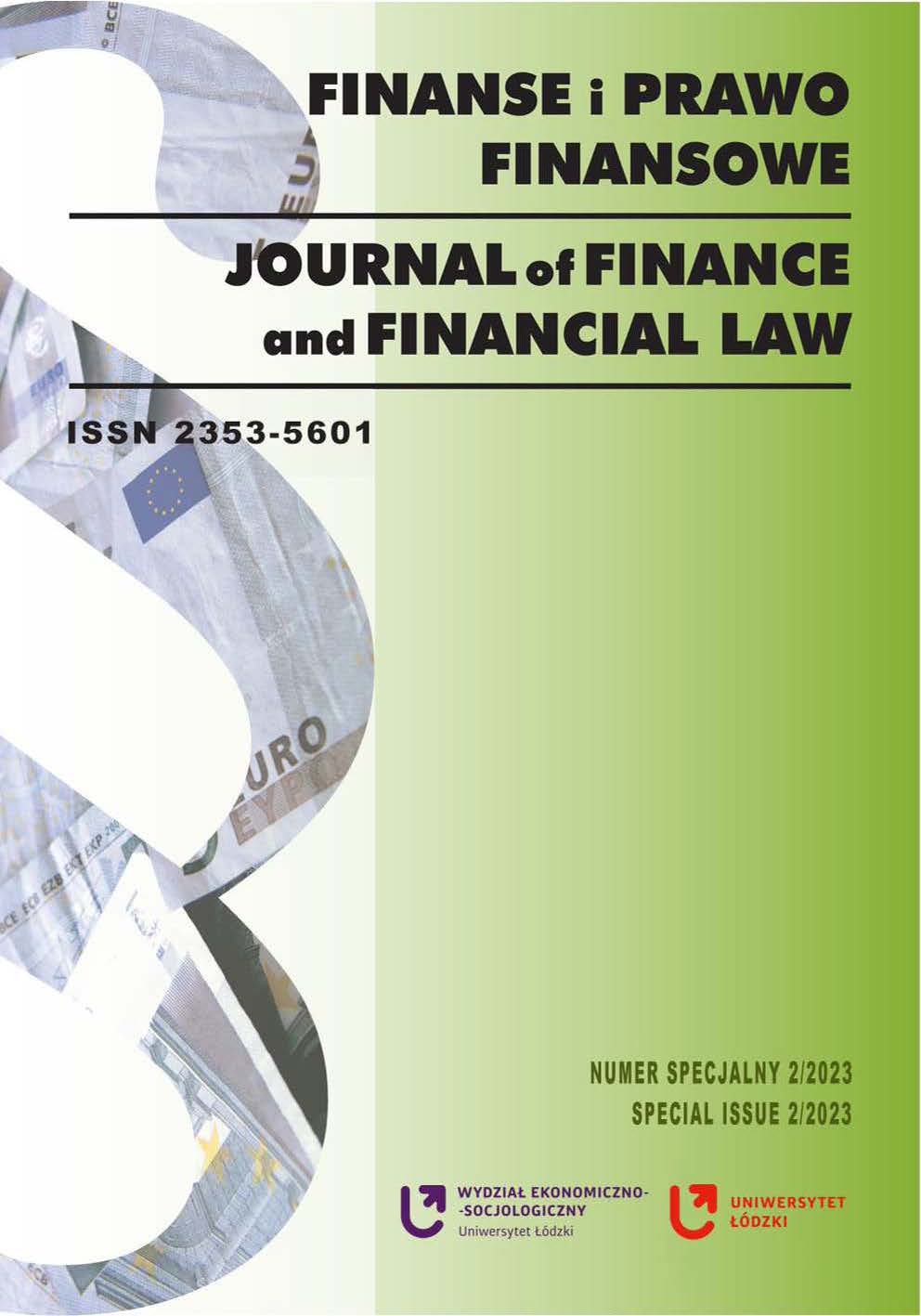Ufinansowienie ziemi rolnej – współczesne przejawy finansjalizacji czy powrót do korzeni ludzkości?
Financialization of Agricultural Land – Contemporary Manifestations of Financialization or Return to the Roots of Humanity (?)
Author(s): Justyna Franc-DąbrowskaSubject(s): Economy, Financial Markets
Published by: Wydawnictwo Uniwersytetu Łódzkiego
Keywords: financialisation; financial markets; finance methodology; land
Summary/Abstract: The purpose of the article/hypothesis. Purpose of the article/hypothesis: The aim of the research is (1) to verify the view that the purchase of land – in particular agricultural land – can be classified as a phenomenon of financing the economy; (2) expanding the definition of financialization, indicating that the dominance of finance is shifting from financial markets and institutions to the land market. Methodology. The study was based on a hypothetico-deductive model. Deductive methods and methods of formulating and verification of theorems were used. They were carried out in the form of reflections on the science of finance on a macro, meso and micro scale. Results of the research. The number, scope and scale of shocks that humanity has faced in the last two decades have no point of reference. Starting with the crash on the American real estate market, through the global economic and climate crisis, pandemic, and ending with numerous armed conflicts. Each of these phenomena has occurred many times in the history of humanity, but never together in such a short space of time. The multitude of discoveries causing an increasingly faster flow of information (including financial information in particular) begins to make their reception and interpretation difficult, thus causing chaos and a sense of loss for the investor (both those with a large and small capital portfolio). For this reason, some investors are moving away from investing in shares and this method of increasing wealth to committing capital to long-term and lower-risk transactions, such as agricultural land. Land has specific features such as non-moveability, non-reproducibility and indestructibility (the last feature is debatable and concerns the proper use of agricultural land) and thus appears as an investment resistant to inflation and crisis phenomena of short and medium term. Research contribution. The current definition of financialization is too narrow. With the increase in the scale and pace of creation of financial instruments, the faster flow of financial information and the increase in the substantive scope and complexity of regulations regulating financial transactions, the financialization of the economy should be expanded to include the involvement of capital in land – in particular, but not only – agricultural land. Limitations. The research was conducted on a limited number of literature items and requires further in-depth research. They mainly concern the markets of the European Union, North America and partly Australia. Therefore, they do not allow for the generalization of the proposed approach to financialization. It is expected that similar relationships occur in rapidly developing countries that are increasing their wealth and that of their citizens. However, this view requires verification.
Journal: Finanse i Prawo Finansowe
- Issue Year: 2/2023
- Issue No: Sp. Issue
- Page Range: 81-101
- Page Count: 21
- Language: Polish

